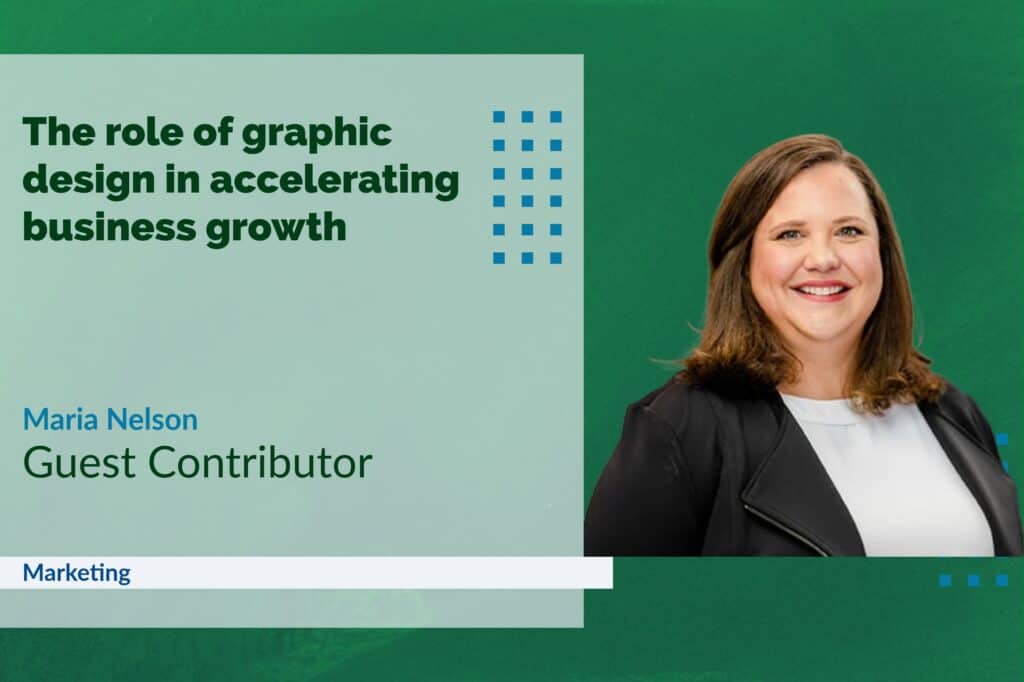
November 10, 2025
Design can make or break the way people see a brand.
It’s not about looking good – it’s about meaning something.
Every color, every curve, every space between letters tells a story about who a company is, what it stands for and why people should care.
It’s not fluff or filler – it’s strategy with style.
In fact, studies show that nearly all first impressions are based on visuals.
Before your audience reads a single word, they’ve already decided how they feel about you. That’s why good graphic design should be considered a growth strategy.
It’s how brands build trust, create emotional connection and ultimately, drive action.
Building brand trust through design
Think of branding as the deliberate effort to shape how people see and feel about your business.
It’s more than an image.
It’s your reputation, your promise and your story all wrapped in one.
Graphic design is how your brand shows up in the world.
It’s your handshake before you ever say a word.
Whether it’s your website, logo or social media ad, design can be the difference between being seen and being remembered.
Consistency in fonts, colors and imagery across every channel can help foster immediate recognition and build lasting trust.
According to Forbes, something as simple as a memorable logo can increase brand recognition by up to 80%.
Every design decision matters because each one helps shape the story your audience remembers.
Psychology of design
Design isn’t just about looking good – it’s about feeling right.
Behind every great visual is an understanding of how people think, feel and move through information.
A well-strategized design uses psychology to connect with people on a deeper level, guiding perception and influencing behavior.
Color, typography and layout all play a role:
- Color drives emotion and behavior. Blue is commonly used to convey trust and calm. Green can suggest health, or, in the wrong context, sickness.
- Typography conveys tone and personality. Serif fonts evoke tradition and credibility, while sans serifs feel modern and approachable.
- Placement and layout guide the eye. Strategic use of hierarchy, balance and negative space directs attention where it matters most and helps users move naturally through content.
When each of these choices aligns with your brand’s purpose, design becomes a story your audience can intuitively follow.
For example, healthcare offices often use soothing colors, minimalistic logos and legible fonts to create a sense of calm and credibility.
A fast-food brand, on the other hand, might rely on bold reds and yellows to stimulate appetite and convey energy.
But more important than the basics of design and psychology is knowing your audience.
Accessibility is one of the most overlooked aspects of branding, yet it directly influences how wide your audience can grow.
Poor contrast ratios, illegible fonts or inaccessible color combinations can alienate entire communities.
When Red Shoes Inc. partnered with a healthcare client to refresh their visual identity, accessibility was non-negotiable.
While blue is often used in health care for the trust and calm it conveys, our research revealed that aging eyes perceive warm colors like reds, oranges, yellows, greens and browns more clearly than cooler blues.
We also simulated how the palette appeared for viewers with various types of color blindness to ensure consistent contrast and readability.
The result was a palette that felt both welcoming and inclusive, aligning with the organization’s values while ensuring that everyone, regardless of age or ability, could engage comfortably.
Ultimately, design psychology is about empathy.
It’s about anticipating how people will feel, what they’ll notice first and what will help them take action.
When brands design with intention and empathy, they don’t just look better, they connect better.
Breaking through in competitive markets
Effective graphic design enables brands to carve out a visual space in the minds of consumers.
With competitors offering similar services or products, visual storytelling is what sets brands apart.
Ensure your branding tells your story by:
- Defining your story – What makes you different, and why should people care?
- Developing a visual language – Use consistent colors, fonts and imagery across every touchpoint.
- Investing in visuals – High-quality photography and video communicate credibility.
Visualizing data with design
When raw numbers feel overwhelming and uninspiring, design can transform them into insights that are easy to grasp.
The American Psychological Association reports that human attention spans are shrinking.
Infographics, charts and other visual storytelling tools make information easier to digest.
These visuals communicate important data points faster than reading a dense report or combing through a multi-year study.
Nonprofits can showcase impact with a quick visual summary of funds raised or lives impacted.
Healthcare organizations can turn complex medical information into clear, actionable infographics that help patients make informed choices.
When you present data visually, you don’t just share information – you inspire action.
Localizing design for target markets
As businesses expand their reach, a one-size-fits-all approach to communication rarely succeeds.
While core design elements – like your logo and color palette – should stay consistent, understanding your audience’s culture, language and values is crucial.
Red Shoes Inc. recently created a digital recruitment campaign for a Wisconsin-based company looking to strengthen recruitment for its specialized trade workforce.
With comprehensive research, we developed a multilingual digital campaign that reflected the target audience’s values, while highlighting the employer’s strengths that aligned with them.
The visuals stayed the same, but the messaging evolved.
That made the difference.
The result?
Positions filled with qualified and motivated workers who felt seen, understood and eager to join a company that spoke their language, literally and figuratively.
Stopping the scroll on social media
On social media, attention is everything and it’s fleeting.
The average person spends less than ten seconds deciding whether to keep scrolling or engage.
Brands are desperate to stop the scroll, and strong design is what earns those seconds by:
- Creating hierarchy – Lead the eye with bold focal points and clean spacing.
- Using emotion – Emotional hooks grab attention. Humor, surprise, fear – anything that makes people feel something stops thumbs mid-scroll.
- Adding motion – Short-form video content naturally draws our eyes and is appreciated when used purposefully.
- Staying authentic – Don’t chase trends that don’t fit your brand.
- Avoiding clutter – Keep copy concise and let imagery speak first.
The cost of poor design
When it comes to securing business in a competitive market, presentation matters, especially for local companies.
Imagine you’re in the market for a custom home and consulting with two local builders.
One sends a brochure with blurry photos, cluttered pages and flimsy cardstock.
The other delivers a clear, professional packet that features high-quality photography, clean layouts, positive testimonials and premium materials.
Which one would you trust to build your home?
Poor design doesn’t just look bad – it sends a message that your business might not care about quality.
Consistent, professional design, on the other hand, signals credibility before a single conversation begins.
In competitive markets, first impressions aren’t just made visually – they’re made instantly.
Graphic design is the first touch point of successful branding and consumer trust.
It’s a strategic tool that tells your story, shapes emotion and drives growth.
Designing with intention is one of the smartest investments a business can make.
Because when your brand looks as strong as it truly is, growth follows naturally.
 If you bury it, they will come
If you bury it, they will come How powerful is paper in NE Wisconsin?
How powerful is paper in NE Wisconsin?







